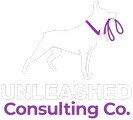Local SEO (Search Engine Optimization) is important for businesses, especially for dog trainers. Local SEO helps your business show up in search results when people look for services in their area.
For example, if someone types “dog trainer near me” or “dog training in [Your City]” into Google, having a strong Local SEO strategy ensures your business appears prominently, making it easier for potential clients to find you.
The local pet services industry is becoming increasingly competitive. With more dog trainers and pet service providers entering the market, it’s important to stand out and attract local customers. If you want your dog training business to thrive, you need to implement effective Local SEO practices that can help you connect with more clients in your community.
This blog helps to provide you with actionable Local SEO strategies specifically for dog trainers. Whether you’re just starting or looking to enhance your online visibility as a dog trainer, these local SEO for dog trainer tips will help you reach more dog owners in your area and grow your business.
Understanding Local SEO as a Dog Trainer
Local SEO stands for Local Search Engine Optimization. It’s a form of SEO focused on improving your online presence so that people in your area can easily find your business when they search for services nearby.
Unlike general SEO, which helps to rank your website higher in search results globally, Local SEO specifically targets searches that have local intent. This means it helps your business show up in results for searches like “dog trainers near me” or “best dog training in [Your City].”
How Does Local SEO Differ from General SEO?
While general SEO focuses on optimizing your website to rank well in searches on a larger scale, Local SEO hones in on your specific geographic location.
Here are some key differences:
- Target Audience: General SEO targets a broad audience, while Local SEO targets people who are searching for services in a specific area.
- Keywords: General SEO may use broader keywords, whereas Local SEO relies on location-based keywords, such as “dog training in [Your City]” or “puppy training near [Your Location].”
- Google My Business: Local SEO heavily relies on Google My Business, a tool that helps businesses manage their online presence across Google, including search results and maps. General SEO does not have this specific component.
Why is Local SEO Important for Dog Trainers?
Understanding the importance of Local SEO is important for dog trainers looking to grow their business. Here are some reasons why it matters:
- Rising Local Searches: Studies show that nearly 78% of local mobile searches result in an offline purchase. This means that when dog owners search for a trainer, they are likely to choose someone close to them.
- Consumer Behavior: People often turn to Google when looking for services in their area. If your business doesn’t show up in those local search results, you could miss out on potential clients.
- Competitive Advantage: With many dog trainers available, having strong Local SEO can set you apart from your competition. When your business appears in local search results, it increases your chances of attracting clients who need your services.
Setting Up Your Google My Business Profile
Creating and Optimizing Your Google My Business Profile
One of the most important steps in improving your Local SEO is setting up a Google My Business (GMB) profile. Google My Business is a free tool that helps businesses manage their online presence across Google, including search results and Google Maps. Here’s a step-by-step guide to creating and optimizing your GMB profile:
- Create Your Account:
- Go to the Google My Business website and click on “Manage now.”
- Sign in with your Google account or create a new one if you don’t have it.
- Enter Your Business Information:
- Enter your business name exactly as it appears in real life. This helps customers find you easily.
- Provide your business address. Make sure it’s accurate and matches the address on your website and other online platforms.
- Choose a phone number where potential clients can reach you.
- Select Your Business Category:
- Choose a primary category that best fits your business, like “Dog Trainer.” You can add additional categories if they apply.
- Add Your Location:
- If you have a physical location where customers can visit you, select “Yes” to the question about a location.
- If you don’t have a storefront but offer services at clients’ homes, select “No” and provide the areas you serve.
- Fill Out Additional Information:
- Include your website URL so customers can easily learn more about your services.
- Add business hours to let potential clients know when you are available.
- Verify Your Business:
- Google will send a verification postcard to your business address. Follow the instructions to verify your profile.
Importance of Accurate Business Information
Keeping your business information accurate is important. Here’s why:
- Consistency: Your business name, address, and phone number (NAP) should be the same everywhere online. This consistency helps Google trust your business and rank it higher in local searches.
- Customer Experience: If potential clients find incorrect information, like the wrong phone number or address, they might get frustrated and choose a competitor instead. Accurate details ensure they can reach you easily and visit your location without any issues.
Utilizing GMB Features
Once your Google My Business profile is set up, take advantage of its features to enhance your online presence:
- Add Services: Clearly list the dog training services you offer, such as obedience training, puppy training, or behavior modification. This helps potential clients understand what you provide at a glance.
- Business Hours: Make sure your hours are accurate and updated. If you have special hours for holidays or events, be sure to add those as well.
- Photos: Upload high-quality photos of your training sessions, facilities, and happy dogs you’ve worked with. Visuals attract attention and help potential clients connect with your services.
- Posts: Use the posting feature to share updates, promotions, or upcoming events. This keeps your audience engaged and informed.
Encouraging Customer Reviews
Customer reviews play a significant role in local rankings and your business’s reputation:
- Ask for Reviews: After completing a training session, politely ask satisfied clients to leave a review on your GMB profile. You can make it easy by providing a link to your profile.
- Respond to Reviews: Always respond to reviews, whether they are positive or negative. Thank clients for their feedback and address any concerns. This shows potential clients that you care about customer satisfaction and are engaged with your community.
- Impact on Local Rankings: The number and quality of reviews can influence your local search rankings. Businesses with higher ratings and more positive reviews are more likely to show up in search results.
Keyword Research for Local SEO for Dog Training Businesses
Identifying Relevant Keywords
Keyword research is an important part of Local SEO. It helps you find the words and phrases that potential clients are using when they search for dog training services in your area. By identifying these relevant keywords, you can tailor your online content to match what your customers are looking for. Here’s how to do it:
- Use Keyword Research Tools: There are several tools available to help you find the best keywords for your business. Some popular options include:
- Google Keyword Planner: This free tool lets you discover keyword ideas and see how often they’re searched. You can filter results based on location to find local keywords.
- Ubersuggest: This tool offers keyword suggestions and provides insights into search volume, competition, and trends, making it easier to identify the right keywords for your business.
- Examples of Local Keywords: Here are some keyword examples that dog trainers might use to attract local clients:
- “Dog training in [Your City]”
- “Best puppy training classes in [Your City]”
- “Obedience training for dogs near me”
- “Affordable dog trainers in [Your Area]”
- “Group dog training sessions in [Your City]”
Using these keywords on your website can help you reach more potential clients searching for dog training services in your location.
Incorporating Keywords into Your Website
Once you’ve identified relevant keywords, it’s time to incorporate them into your website. This helps search engines understand what your content is about and improves your chances of ranking higher in local search results. Here’s where to place your keywords:
- Titles: Your page titles are one of the first things search engines and users see. Include your main keyword here to make it clear what the page is about. For example, a title could be “Professional Dog Training in [Your City].”
- Meta Descriptions: The meta description is a brief summary of your page that appears in search results. It should be engaging and include your main keyword. For example, “Looking for dog training in [Your City]? Our professional trainers offer personalized obedience classes and puppy training to help your dog succeed!”
- Headers: Use headers (H1, H2, H3) to organize your content and include keywords where appropriate. For instance, your H1 could be “Top Dog Training Services in [Your City],” and an H2 could be “Why Choose Our Dog Training Classes?”
- Content: Naturally incorporate your keywords throughout the body of your content. Avoid keyword stuffing, which is when you use a keyword too many times in an unnatural way. Instead, aim for a balanced and engaging writing style. For example, you might write, “Our dog training classes in [Your City] focus on positive reinforcement to help your dog learn effectively.”
On-Page SEO Strategies as a Dog Trainer
To improve your Local SEO, you need to optimize your website so that it ranks higher in search results for people looking for dog training services in your area. Here are some best practices to follow:
- Title Tags: The title tag is the text that appears in search engine results and at the top of a web page. Make sure to include relevant keywords in your title tags, such as “Dog Training in [Your City].” This helps search engines and users understand what your page is about.
- Headings: Use headings (like H1, H2, and H3) to organize your content. Your main heading (H1) should include your primary keyword. For example, if your main keyword is “dog training in [Your City],” your H1 could be “Expert Dog Training in [Your City].” Subheadings (H2, H3) can help break down your content into smaller sections, making it easier for visitors to read.
- Content: Write high-quality, relevant content that includes your target keywords naturally. Focus on providing value to your readers. For example, you can write about the benefits of dog training, tips for training specific behaviors, or advice on choosing the right training program. The more useful your content is, the more likely people will want to share it and engage with it.
Creating Location-Specific Landing Pages
Creating dedicated landing pages for each service or location can significantly enhance your Local SEO efforts. Here’s how:
- Dedicated Pages for Services: If you offer different types of training (like puppy training, obedience training, or behavior modification), create separate pages for each service. For instance, have a page specifically for “Puppy Training in [Your City].” This allows you to target specific keywords and provides detailed information for potential clients.
- Location-Specific Content: If you serve multiple cities or neighborhoods, consider creating a landing page for each location. Each page can highlight your services in that area and include relevant keywords. For example, “Dog Training in [Neighborhood Name]” can attract local clients searching for services in that specific neighborhood.
Content Strategy
An effective content strategy can help you engage local clients and improve your website’s SEO. Here are some tips:
- Blogging About Local Dog Training Events: Write blog posts about local dog training events, workshops, or community gatherings. This not only shows your involvement in the community but also provides valuable information to your readers. For example, you could write about an upcoming dog training seminar in your city or share insights from a recent local event.
- Tips and Advice: Offer practical training tips and advice for dog owners. Topics could include how to handle common dog behavior issues, the benefits of socialization, or fun training games to play with their pets. These posts can establish you as an expert in the field and attract more visitors to your website.
- Community Involvement: Share stories about your involvement in the local dog community, such as partnerships with shelters or participation in charity events. This shows potential clients that you care about the community and are dedicated to improving the lives of dogs and their owners.
- Use of Images, Videos, and Testimonials: Incorporate images and videos of your training sessions, happy clients, and success stories. Visual content makes your website more engaging and helps potential clients connect with your services.
- Testimonials: Display client testimonials prominently on your website. Positive reviews and success stories can build trust and credibility with potential clients. Consider creating a dedicated page for testimonials or featuring them on your service pages.
Building Local Citations and Backlinks
Local citations are online mentions of your business’s name, address, and phone number (often referred to as NAP). They are important for Local SEO because they help search engines verify that your business exists and is located in the area you claim. The more places your business information appears online, the more credible it becomes in the eyes of search engines like Google.
Importance of Citations for Local SEO
Having accurate and consistent local citations can significantly improve your Local SEO for several reasons:
- Boosts Visibility: Citations help increase your business’s visibility in local search results. When people search for dog trainers in their area, having citations can make it easier for them to find you.
- Builds Trust: When search engines see consistent business information across multiple sites, it builds trust in your business’s legitimacy. This can positively impact your rankings in local searches.
- Enhances Local Ranking: Citations can improve your ranking in Google Maps and local search results. More citations from reputable sources can lead to higher rankings.
Popular Directories for Dog Trainers
Here are some popular online directories where dog trainers can list their businesses:
- Yelp: A well-known platform for finding local businesses and reading customer reviews. Creating a Yelp profile can help attract new clients.
- Yellow Pages: This traditional directory is still relevant online and is often used by people looking for local services, including dog training.
- Angie’s List: A site where users can find and review service providers, including dog trainers. Listing here can help you reach a wider audience.
- Google My Business: As mentioned earlier, this is crucial for local SEO and helps your business appear in Google search results and maps.
- Facebook: Create a business page on Facebook to connect with local dog owners and share updates about your services.
- Local Chamber of Commerce: Being listed in your local chamber of commerce can help establish your business’s credibility and connect you with the community.
Strategies for Building Quality Backlinks
Backlinks are links from other websites to your own. They are important for improving your website’s authority and SEO ranking. Here are some strategies to build quality backlinks:
- Collaborating with Local Businesses: Partner with local businesses that complement your services, such as veterinarians, pet stores, or dog groomers. You could offer to write a guest blog post for their website or collaborate on a local event. When they link to your site from theirs, it creates a valuable backlink.
- Guest Posting on Local Blogs or Websites: Find local blogs or websites related to pets, animals, or your community. Offer to write a guest post that provides helpful information about dog training. In return, request that they include a link back to your website in your author bio or within the content. This not only helps build backlinks but also positions you as an expert in your field.
- Getting Listed in Local Online Publications: Many cities have local online magazines or publications that feature businesses in the area. Reach out to them to see if they would be interested in featuring your dog training services. This can provide valuable exposure and backlinks.
- Joining Local Community Groups: Engage with local community groups on social media or forums. By being an active participant and providing helpful advice, you may get opportunities to share your website link in relevant discussions.
Monitoring Your Local SEO Performance
Monitoring your Local SEO performance is important to understand how well your strategies are working and where you can improve. Here are some recommended tools that can help you track your progress:
- Google Analytics: This free tool provides valuable insights into your website’s traffic. You can see how many people are visiting your site, which pages they’re viewing, and how they found you (through search engines, social media, etc.). By analyzing this data, you can understand what’s working and what needs improvement.
- Google My Business (GMB) Insights: GMB Insights offers information specifically related to your Google My Business profile. You can see how many people viewed your profile, how they found it (through searches or maps), and what actions they took (like visiting your website or calling your business). This information helps you understand how effective your GMB profile is at attracting local clients.
- SEMrush: This is a powerful SEO tool that can provide insights into your website’s performance, keyword rankings, and competitors. It helps you track your local search rankings and see how you compare to other dog trainers in your area. While it does come with a cost, many find it worth the investment for its comprehensive features.
Analyzing Results and Making Adjustments
Once you have collected data from these tools, the next step is to analyze the results. Here are some key metrics to focus on and how to improve based on your performance:
- Website Traffic: Look at the number of visitors coming to your website. If you see an increase in traffic after implementing Local SEO strategies, it’s a good sign that your efforts are working. However, if traffic is low, consider revisiting your keyword strategy or improving your content.
- Search Queries: In Google Analytics, you can see the search queries that brought people to your site. If you notice that certain keywords are driving traffic, consider creating more content around those topics. If some keywords are not performing well, it might be time to try different ones.
- Conversion Rate: This metric shows how many visitors take a desired action, such as filling out a contact form or signing up for a class. If your conversion rate is low, it may indicate that your website needs better calls-to-action (CTAs) or clearer information about your services. Experiment with different CTAs to see what works best.
- GMB Actions: Check the actions taken on your Google My Business profile, such as how many people clicked to call you or requested directions. If you notice a low number of calls, consider optimizing your profile with engaging photos and posts to encourage more interactions.
- Customer Reviews: Monitor the number and quality of reviews on your GMB profile and other platforms. Positive reviews can improve your visibility and credibility, while negative reviews provide insights into areas that need improvement. Responding to reviews also shows potential clients that you value feedback.
By regularly analyzing these metrics, you can make informed decisions about your Local SEO strategy. Adjust your tactics based on what the data tells you. For example, if certain keywords are driving traffic but not converting, you might need to improve the landing page associated with those keywords.
Conclusion
Local SEO is important for dog trainers who want to attract more clients in their area. By implementing effective strategies such as optimizing your website, creating a Google My Business profile, and building local citations and backlinks, you can improve your visibility in local search results.
Monitoring your Local SEO performance using tools like Google Analytics and GMB Insights allows you to understand how well your efforts are working. By regularly analyzing your results and making adjustments, you can ensure that your strategies remain effective and continue to draw in new clients.
Remember, Local SEO is an ongoing process. Stay engaged with your community, provide valuable content, and keep refining your strategies to stay ahead of the competition. With dedication and the right approach, your dog training business can thrive and become the go-to choice for pet owners in your area.
Need help boosting your local SEO game?
Let Unleashed Consulting be your guide! We specialize in helping dog trainers like you thrive in your local market. Contact us today and let’s take your dog training business to the next level. 🐾
Frequently Asked Questions
1. What is Local SEO, and why is it important for dog trainers?
Local SEO helps businesses like dog trainers show up in search results when people look for services in their area. It’s important because it helps you reach local clients who are searching for dog training. If your business is optimized for local searches, more potential clients will find you, which can lead to more bookings.
2. How can I improve my Google My Business profile?
To improve your Google My Business profile, make sure your business information is accurate and complete. This includes your name, address, phone number, business hours, and website. Add high-quality photos of your training sessions and encourage happy clients to leave reviews. Regularly posting updates and special offers can also help attract more attention to your profile.
3. What are local citations, and how do they help my business?
Local citations are mentions of your business’s name, address, and phone number on other websites, like online directories or social media. They help your business get noticed and improve your local SEO. The more places your information is listed consistently, the more credible you appear to search engines, which can help you rank higher in local search results.
4. How do I know if my Local SEO strategies are working?
You can check if your Local SEO strategies are working by using tools like Google Analytics and Google My Business Insights. Look for increases in website traffic, higher search rankings for local keywords, and more actions on your GMB profile, such as calls or directions requests. If you see positive changes in these areas, it’s a good sign that your efforts are paying off!








